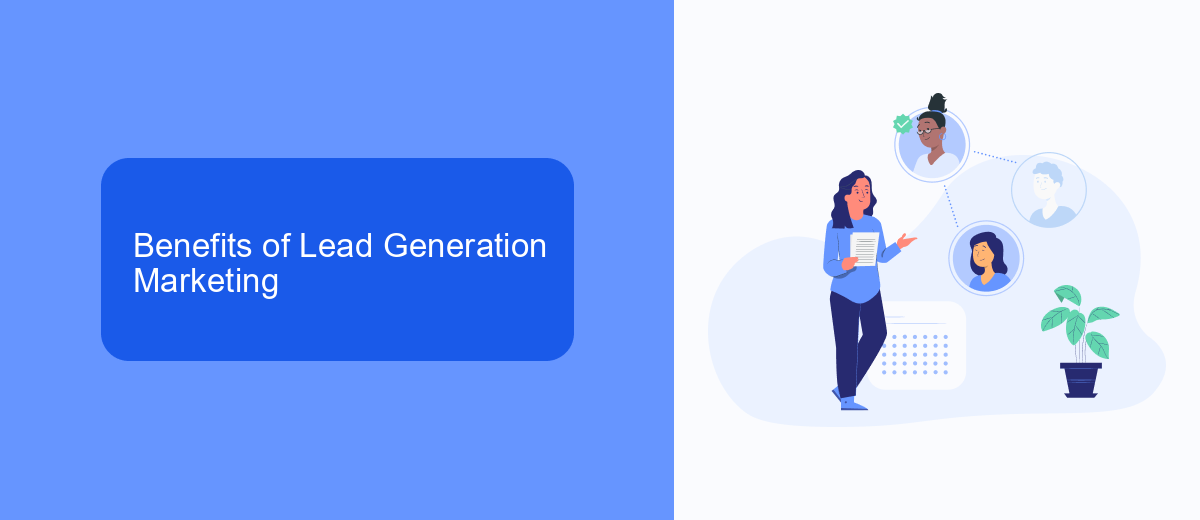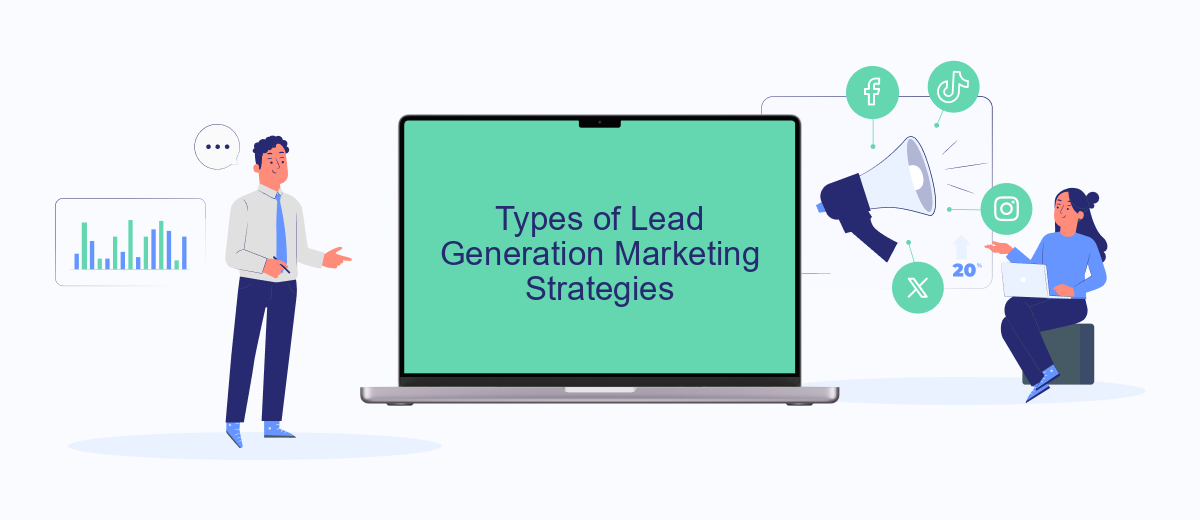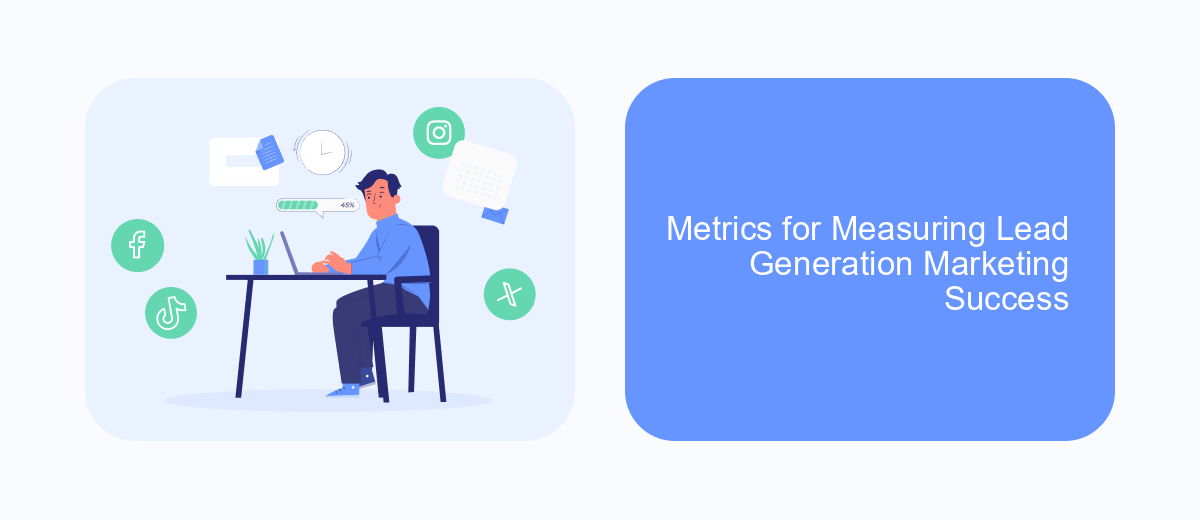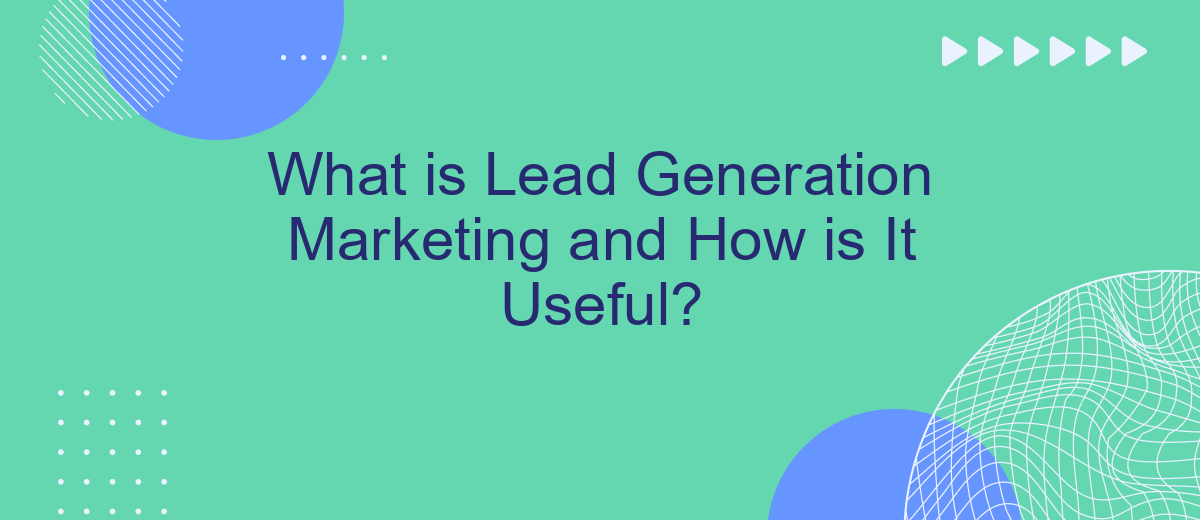Lead generation marketing is a strategic approach used by businesses to attract and convert potential customers into leads, nurturing them through the sales funnel. By leveraging various digital channels such as social media, email, and content marketing, companies can effectively engage their target audience. This process not only enhances brand visibility but also drives sales growth, making it an essential component of modern marketing strategies.
Definition of Lead Generation Marketing
Lead generation marketing is a strategic process used by businesses to attract and convert prospects into potential customers. It involves creating interest and capturing contact information from individuals who have shown an interest in a company's products or services. This process is essential for building a pipeline of potential customers, which can ultimately lead to increased sales and revenue.
- Identifying target audiences through market research and analysis.
- Creating valuable content that addresses the needs and interests of potential leads.
- Utilizing various channels such as social media, email, and websites to reach prospects.
- Implementing lead magnets like free trials, e-books, or webinars to capture contact information.
- Analyzing and nurturing leads through personalized communication and follow-ups.
By effectively implementing lead generation marketing, businesses can establish a systematic approach to engaging with potential customers. This not only helps in building brand awareness but also in fostering long-term relationships with prospects. Ultimately, a well-executed lead generation strategy can significantly enhance a company's ability to grow its customer base and achieve its sales objectives.
Benefits of Lead Generation Marketing

Lead generation marketing offers numerous benefits for businesses looking to expand their customer base and increase revenue. By targeting potential customers who have shown interest in your products or services, lead generation helps create a more focused and efficient marketing strategy. This approach not only saves time and resources but also improves the quality of leads, making it easier for sales teams to convert them into paying customers. As a result, businesses can experience a higher return on investment and a more streamlined sales process.
Moreover, lead generation marketing allows for better tracking and analysis of customer behavior, enabling businesses to refine their marketing strategies over time. By utilizing services like SaveMyLeads, companies can automate the integration of lead data across various platforms, ensuring a seamless flow of information. This automation not only reduces manual data entry errors but also enhances the overall efficiency of marketing campaigns. Ultimately, lead generation marketing empowers businesses to build stronger relationships with their audience, fostering long-term customer loyalty and growth.
Types of Lead Generation Marketing Strategies

Lead generation marketing strategies are essential for businesses looking to expand their customer base and increase sales. These strategies focus on attracting potential customers and converting them into leads that can be nurtured into clients. By employing a variety of tactics, businesses can effectively capture the interest of their target audience and guide them through the sales funnel.
- Content Marketing: Creating valuable content, such as blog posts, e-books, or webinars, to attract and engage potential leads.
- Social Media Marketing: Utilizing platforms like Facebook, Instagram, and LinkedIn to connect with prospects and promote lead magnets.
- Email Marketing: Sending targeted email campaigns to nurture leads and encourage them to take action.
- Search Engine Optimization (SEO): Improving website visibility on search engines to attract organic traffic and generate leads.
- Pay-Per-Click (PPC) Advertising: Running paid ads on search engines and social media to reach potential leads quickly.
Implementing a mix of these strategies can significantly enhance a company's ability to generate leads. It is crucial to analyze the effectiveness of each approach and adjust efforts accordingly to ensure optimal results. By doing so, businesses can build a steady pipeline of prospects and achieve sustainable growth.
Metrics for Measuring Lead Generation Marketing Success

To gauge the effectiveness of lead generation marketing, businesses must rely on a set of key metrics. These metrics provide valuable insights into the performance of marketing strategies and help in optimizing future campaigns. Understanding these metrics is crucial for ensuring a steady flow of qualified leads.
One of the primary metrics is the conversion rate, which measures the percentage of visitors who take the desired action, such as filling out a form or signing up for a newsletter. Another important metric is the cost per lead (CPL), which calculates the expense incurred to acquire a single lead. Monitoring these metrics helps in assessing the return on investment (ROI) of marketing efforts.
- Lead Quality: Evaluates the potential of leads to convert into customers.
- Lead Velocity Rate (LVR): Measures the speed at which leads move through the sales pipeline.
- Customer Acquisition Cost (CAC): Assesses the overall cost to acquire a new customer.
By regularly analyzing these metrics, businesses can refine their lead generation strategies, ensuring improved efficiency and higher success rates. This continuous monitoring enables marketers to make data-driven decisions, ultimately enhancing the growth and profitability of the organization.
- Automate the work with leads from the Facebook advertising account
- Empower with integrations and instant transfer of leads
- Don't spend money on developers or integrators
- Save time by automating routine tasks
Integrating Lead Generation Tools
Integrating lead generation tools into your marketing strategy can significantly enhance your ability to capture and nurture potential customers. These tools streamline the process of collecting leads by automating data collection, segmentation, and follow-up tasks. By leveraging advanced analytics, businesses can gain insights into customer behavior and preferences, allowing for more personalized marketing efforts. This not only increases the efficiency of lead generation but also improves the quality of leads, resulting in higher conversion rates.
Services like SaveMyLeads simplify the integration process by providing seamless connectivity between various platforms. With SaveMyLeads, businesses can automate the transfer of lead data from social media, websites, and other sources directly into their CRM systems. This ensures that no potential lead is lost and allows for immediate action by sales teams. By reducing manual data entry and minimizing errors, SaveMyLeads enhances productivity and ensures that your lead generation efforts are both effective and efficient. Integrating such tools can transform your marketing strategy, making it more responsive and data-driven.
FAQ
What is lead generation marketing?
Why is lead generation important for businesses?
How does lead generation marketing differ from traditional marketing?
What are some common lead generation strategies?
How can businesses automate and integrate their lead generation processes?
You probably know that the speed of leads processing directly affects the conversion and customer loyalty. Do you want to receive real-time information about new orders from Facebook and Instagram in order to respond to them as quickly as possible? Use the SaveMyLeads online connector. Link your Facebook advertising account to the messenger so that employees receive notifications about new leads. Create an integration with the SMS service so that a welcome message is sent to each new customer. Adding leads to a CRM system, contacts to mailing lists, tasks to project management programs – all this and much more can be automated using SaveMyLeads. Set up integrations, get rid of routine operations and focus on the really important tasks.

